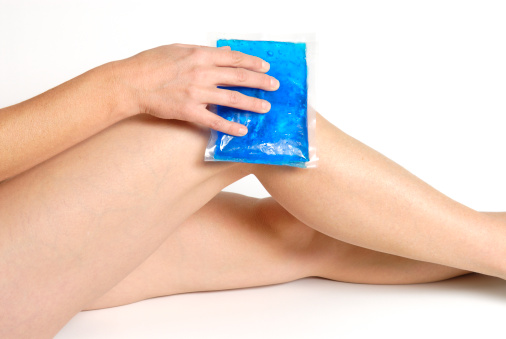How to Treat a Swollen Knee at Home

Swelling in the knee is common consequence of a sports injury or an accident. The knee turns red and it begins to feel warm as it is filled with fluid. The knee ends up becoming stiff due to the fluid accumulation, thus affecting the person’s mobility.
If a swollen knee if left untreated, it can weaken the muscles of that particular leg since both the leg and the knee are sparingly moved.
While a swollen knee can be easily taken care of by visiting a doctor, it is possible to treat it at home as well, though it is strongly recommended to still visit a doctor.
Instructions
-
1
The first thing you need to do is to lie or sit down and take the weight of your body off your swollen knee. In case you really have to move around, ask a family member to help you. In case you do not have anybody around to help you, use crutches. It is important to avoid putting pressure on the affected knee joint as it can result in the swelling getting even worse. It is best to avoid moving around unnecessarily.
-
2
While lying down on a bed or sofa, position your leg in such a way that your knee is raised at a higher level that your heart. This will allow the system to flush the fluid the swollen knee. In case you are lying on a sofa, elevate your knee by propping it on the arm-rest. Add cushions to the arm-rest in case it does not lift your knee to an adequate height. While lying on bed, propping your knee on a pillow will let you bring your knee higher than your heart.
-
3
It is really important to apply cold pack to your swollen knee, as the cold temperate not only reduces the swelling, but also eases the pain. Applying the cold pack for 20 minutes three times or more a day will be sufficient.
-
4
Wrapping your knee with an elastic bandage will compress the swollen knee, promoting the fluid in it to drain and consequently reducing the swelling. Be careful while wrapping your knee with an elastic bandage, as wrapping it too tightly will cause the area right below the knee to swell as well, thus adding to your troubles.
-
5
Over-the-counter, non-steroidal anti-inflammatory medicines will further help to decrease the swelling in your knee and ease pain. ibuprofen and aspirin are two of the most popular choice of medicines for this purpose.
-
6
Limit the movement of your knee by supporting it with knee brace. Wear it on your knee for a few days after you start moving around. Once you are sure that the swelling is gone and you do not feel any more pain, starting moving around without a knee brace.



